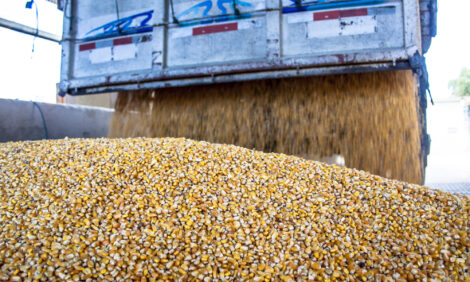



NPA: Disease Cost Levy is a Very Blunt Tool
UK - NPA cannot sign up to Defra’s proposed cost and responsibility levy, says NPA general manager Barney Kay. For one thing, the proposed charging structure is not fair between the species."Quoting Defra’s own figures the annual per centage of farm business income for the pig sector of the levy proposals is 6 per cent, when for dairy, beef and sheep it is 1.2-2.8 per cent and for poultry 4.3 per cent."
NPA takes issue with Defra’s claim the levy will not effect pig producers’ competitive position at home and abroad. And it objects to the fact there is no recognition of pig and poultry's higher biosecurity standards.
"This demonstrates a very blunt tool for reducing disease and improving farm standards and seems focused on revenue generation and cost recovery."
NPA wants an independent review of Defra's 3400m animal health budget to ascertain whether it is fit for purpose and cost effective. And in any case it wants the budget to be ring-fenced for the first five years of Defra's proposed independent health body.
NPA says it supports the forming of a new animal health body but only if there is a place on the board for someone with suitable pig industry knowledge.
In his response on behalf of NPA to Defra's Cost and Responsibility Sharing consultation, Barney Kay says the concept of minimum payment thresholds is "patently ridiculous" if the aim is that the whole livestock industry will be engaged in improving animal health and reducing disease risk.
"To disenfranchise a large number of small livestock producers, because payment collection is not cost-effective undermines the goal of creating collective responsibility, engagement and awareness."
For Defra to suggest a levy scheme that would remove 59 per cent of sheep-keepers and 52 per cent of pig-keepers from the sends out a clear message to producers that it is proposing a livestock tax designed to reduce government costs, rather than a means to influence industry behaviour to reduce disease risks, says NPA.
"This is a poorly thought out, and poorly presented levy proposal," says Barney Kay.
"Why is it that the proposed payments levied on the pig industry equate to 6 per cent of farm business income, whereas for the beef, sheep and dairy industry it varies from 1.2-2.8 per cent and for the poultry sector 4.3 per cent?
"The proposal as laid out would be extremely divisive between the sectors and completely inequitable. This inequity is further highlighted by the majority of current field expenditure — 37 per cent of total budget — being expended on bovine and ovine disease management and prevention, with little or nothing spent currently on porcine specific diseases."
He adds that implying good practice will be rewarded at some point in the future is not the best method to engage livestock businesses that have made significant investments to ensure they have high biosecurity. "This needs to be recognised right from the start and reflected in potential industry costs."
NPA takes Defra to task for suggesting the cost of the levy will not impact on supply as livestock farmers are not "immediately responsive" to cost changes.
The unsupported pig sector has seen its breeding herd halve in the last ten years, says NPA — primarily due to unilateral legislation — and recent increases in feed costs resulted in a further 2 per cent fall in the national herd.
"The claim that producers are not responsive to cost changes certainly does not reflect the position with unsupported livestock sectors."
NPA supports the proposal for a new independent body for animal health because this should ensure animal health policy is science-based, but it remains concerned that government will withdraw sufficiently from issues of political sensitivity.
It says it is unable to comment on Defra's proposal that the livestock take out insurance against the extra costs imposed by an outbreak of exotic disease, such as foot and mouth.
"As no substantial detail has been provided concerning how this insurance scheme might work, or any indication that there is an appetite for this idea amongst the insurance community (which the NPA doubts), it is impossible to comment on this vague proposal," says Barney Kay.
"The NPA’s concern is that if an insurer is prepared to present an exotic disease insurance product it would be at a price that would be prohibitively expensive for livestock producers."







